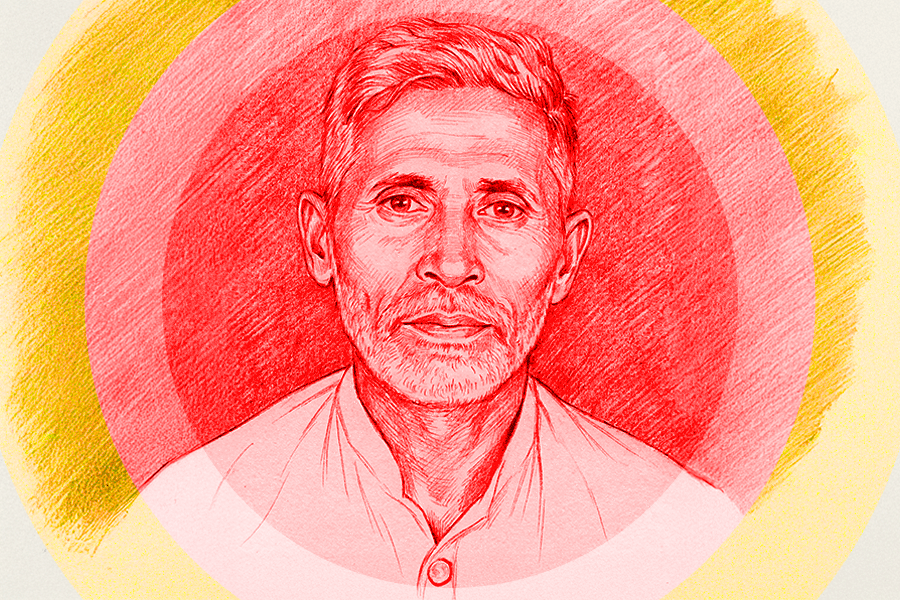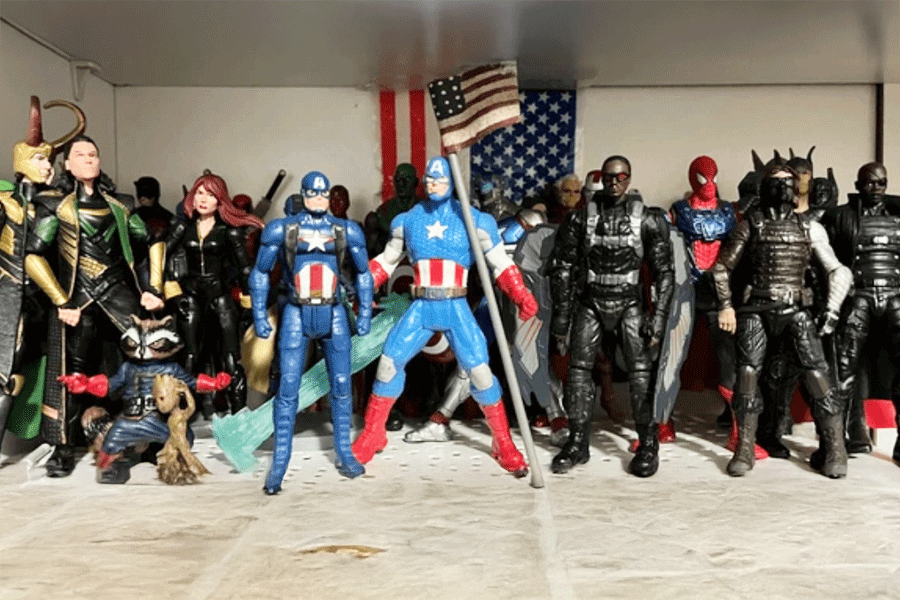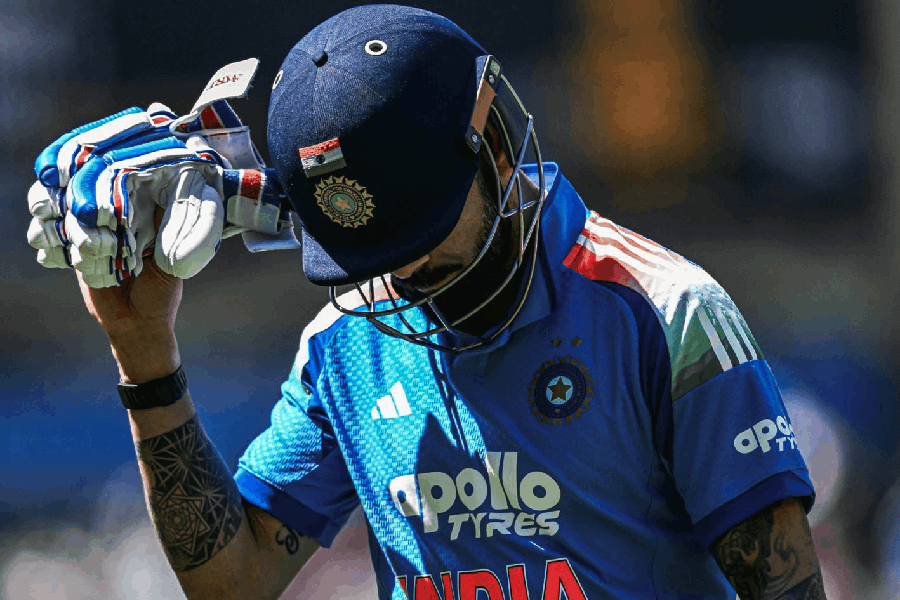 |
tuesdays with morrie, mitch albom
Tuesdays with Morrie (1997) comes with the tagline: “An old man, a young man, and life’s greatest lesson”. The young man is sports columnist Mitch Albom; the old man is his college professor Morrie Schwartz who is dying, and the greatest lesson in life is taught every Tuesday.
They cover various topics every Tuesday — from money to marriage, family to forgiveness. But don’t dismiss it as just another self-help book. It’s much more. The book is beautiful. It tells a story, and a real story at that.
Tuesdays with Morrie teaches you to be thankful for the little things you have (way simpler said than done). It teaches you to focus on the important things, to accept. It teaches you compassion and how to live happy and that “dying is not synonymous with useless”. And the biggest lesson: not to take anything — or anyone — for granted. We love it when quoting his favourite poet WH Auden, Schwartz says that we must “love each other or perish”.
This book moves you at whichever stage of your life you read it. If a friend is in pain, this book can be the balm that words may not be able to provide. We know, it happened to us.
Did you know: Tuesdays with Morrie spent four years on the New York Times bestseller list.
 |
the lord of the rings, JRR Tolkien
A classic tale of good versus bad rendered fantastic by the genius of JRR Tolkien, The Lord of the Rings trilogy (1954 & 1955) hardly needs an introduction. The bible for all fantasy freaks creates a world steeped in legend and magic, where little men live underground, dead kings walk the earth, trees talk, eagle lords rule the sky and creatures of the dark — nazguls and orcs — roam free.
To read Tolkien, you need patience and reverence. Because in his unique style, the master story-teller creates not just intriguing characters and incidents anchored to the pages of a book, but a parallel mythology akin to the Arthurian tales. Bound in history, members of the chosen council — a fellowship of men, elves, wizards, dwarves and hobbits chosen to destroy the One Ring — have to venture forth and face their darkest fears, en route to Mordor, where Sauron, the Dark Lord, gathers ranks.
Memorable characters, haunting love stories and lessons in despair and hope make LOTR a rich fable. But what makes Tolkien live on, where so many fantasies have faded, is the glimpses of reality, of issues still relevant that flash through. Inspired by his experiences during World War I, Tolkien’s Middle-earth mirrors a landscape where a similar power struggle unfolds, in the process holding up human failings, the harm man brings upon nature and echoing the ravages and the futility of war. It’s a series we read, re-read and then read some more!
Did you know: Tolkien had started writing LOTR as a sequel to his children’s fantasy novel, The Hobbit.
 |
to kill a mockingbird, harper lee
A tale of growing up, tree houses, fist fights, freshly baked cakes, scary neighbours, mysterious gifts in tree hollows, and a father who plays with his kids, reads to them and treats them with “courteous detachment”, To Kill a Mockingbird (1960) takes us back to our childhood and also reminds us what good parenting is all about.
Set in early 1930s in the American South, the novel is about the adventures of six-year-old Scout, her elder brother Jem and their friend Dill. Then there is the reclusive Boo Radley — who according to town talk, is a “malevolent phantom” whose evil breath freezes the azaleas in people’s gardens.
While the spirited Scout is adorable and their games the stuff of every child’s fantasy, it’s her idealistic lawyer father Atticus Finch who steals our hearts. We love it that he doesn’t mind his kids calling him Atticus. We applaud when he stands up against the entire town to defend two black men accused of raping a white girl at a time when racial segregation was the norm. And we downright swoon when he tells his son, courage is “when you’re licked before you begin but you begin anyway and you see it through no matter what”.
Did you know: To Kill a Mockingbird is the only published novel by Harper Lee. It won her the Pulitzer Prize.
 |
Never Let Me Go, Kazuo Ishiguro
This dystopian book (2005) speaks to the reader about a misplaced sense of duty, about coping with things you don’t want to address, about humans being conditioned to become a workforce and living out their lives doing something they don’t really believe in, and the confusion that comes with that.
The story, set in England, is about three youngsters who are clones, created to provide vital organs to their “originals”. Ishiguro never explicitly addresses the issues that make this book so disturbing and his avoidance of anything unsavoury makes it all the more powerful and upsetting. It gives you a feeling of dread throughout, and you know it’s not going to end very well, but you can never put a finger on it. A haunting book, we found ourselves perceiving it completely differently once we finished it.
Did you know: Never Let Me Go was shortlisted for the 2005 Booker Prize and was included in Time magazine’s 100 best English-language novels (1923 to 2005).
 |
exodus, leon uris
Exodus (1958) is the tale of the birth of Israel and the struggle for existence of Jews in the “Promised Land”. But what make the book poignant are the love stories — of the tall, handsome Israeli leader Ari Ben Canaan and American nurse Katherine “Kitty” Fremont, of the tough-outside-soft-inside sabra girl Jordana Ben Canaan and David Ben Ami and of concentration camp survivors Karen Clement and Dov Landau. The tales of love, friendship and loss woven into the story of the formation of Israel are deeply touching. But what makes Exodus our favourite is the character of Ari Ben Canaan, the brilliant, brave but seemingly emotionless man, and his fight against the love for an American woman and the dedication to his country. In the end, when Ari breaks down and cries, the reader is humbled. Exodus is a book that once read, can never be forgotten.
Did you know: The novel, named after the 1947 immigration ship Exodus, became the biggest bestseller in the US after Gone With the Wind. [Psst: we were unable to feature Gone With the Wind here because almost everyone wanted to write on it!] franny and Zooey, JD Salinger Franny and Zooey (1961) is actually a short story Franny, about a college girl who goes through a breakdown, and a novella Zooey, about Franny’s elder brother Zooey and how he helps her out of it.
Franny Glass, who is also a budding actress, decides to give up acting because she is “sick of ego, ego ego” — her own and everybody else’s. What sets this off is a book called The Way of Pilgrim that talks about a continuous prayer that when repeated constantly, becomes internalised. She obsesses about the prayer, almost wasting away in the process. Concerned about his sister, Zooey calls and relates an anecdote.
When Zooey was younger, he was acting in a show that he hated. He complained bitterly about it and refused to shine his shoes for morons. The audience wouldn’t be able to see them anyway, he argued. That was when Seymour, their elder brother, told him to “shine them for the Fat Lady”. Seymour never told him who the Fat Lady was but Zooey discovered a secret. “There isn’t anyone out there who isn’t Seymour’s Fat Lady.”
Which is why Franny and Zooey is one of our favourites. It reminds us to do it for the Fat Lady, even when we don’t want to.
Did you know: Actress Zooey Deschanel, who plays Summer in 500 Days of Summer, is said to be named after Zooey Glass of Franny and Zooey.
 |
heidi, Johanna Spyri
The best tales are told simply.
Heidi (1880) is the story of an orphaned country girl trying to understand big-city life. It is with a heavy heart that the five-year-old leaves the picturesque hamlet of Dorfli for Frankfurt, where she becomes a companion to Clara, a lonely girl in a wheelchair. But Heidi is restless to return to Uncle Alm, who lives halfway up the Swiss mountains, where she can see the valley below, kissed by golden rays and the “great bird of prey wheeling around in great circles”, and drink in the “fresh air and sweet smell of flowers”.
We love this pictorial book for it teaches us that the path to happiness is following your heart. For Heidi, it is the familiar sounds and sights — the rocks alight in the evening glow, the wind in the fir trees, the reassuring presence of her grandfather, her friendship with goatherd Peter and his light-footed animals and his blind grandmother — that bring comfort. The story ends with Heidi returning to her comfort land, the “great burning longing” of her heart satisfied. Feel-good reading never got better than this.
Did you know: The actual name of the book is Heidi’s Years of Wandering and Learning.
 |
something like an autobiography, akira kurosawa
What goes through a filmmaker’s mind when he makes a certain movie is mostly an exercise in speculation. Only a failed director explains what he wanted to say. And that’s why any written material by master directors is weighed in gold by movie buffs. A lot of Tarkovsky’s movies become that much more meaningful when one reads his book on film theory, Sculpting in Time. Similarly, a reading of Satyajit Ray’s Our Films, Their Films gives us a much deeper insight into the making of some of his masterpieces.
In this regard, the Japanese auteur Akira Kurosawa’s book Something Like An Autobiography (1982) is a work of infinite importance. The bible for Kurosawa’s films has always been Donald Richie’s must-read book, The Films of Akira Kurosawa. But what we get in this Kurosawa autobiography is the mastermind at work behind some of the greatest films ever made. How his personal life, his childhood, his relationship with his family all went on to contribute to his voice as a filmmaker. Also, the director gives an elaborate account of his little-known pre-Rashomon days, his early career at the Japanese studios of Toho and Daiei.
The writing, unlike most biographies and autobiographies of filmmakers, is not dry. Despite being a work of translation, Kurosawa’s sense of humour peeks through almost every chapter. And much like his films, which always became so much more than the incidents or stories he narrated, Something Like An Autobiography too jumps out from the memoirs rack and in a way encompasses the history of Japan, unfolding through the life of one of its most extraordinary sons.
Did you know: The original Japanese title of the book was The Sweat of Toad, referring to a medicinal potion pre-war Japan would concoct by simmering the sweat of toads for 3,721 days!
 |
animal farm, george orwell
It’s a book you can read at your kid’s bedside, but no other work of fiction since World War II rings so true, so grim as Animal Farm (1945). In this novella, George Orwell uses the fable structure — talking animals and moral underpinnings — for a scathing indictment of the Stalinist era with its propaganda, sham trials, scapegoating and purges.
The allegory is tongue-in-cheek — the boar called Old Major for Marx and the pig named Napoleon for Stalin — and the black humour leave you in splits. Like the Seventh Commandment of Animalism, which had originally read “All animals are equal”. But with Napoleon in charge, it becomes “All animals are equal, but some animals are more equal than others”. You laugh, then cringe and finally realise why long after the Berlin Wall is gone and USSR has splintered, people are still reading Animal Farm. Because it’s about animals, it’s about us.
Did you know: In March this year, the Buddhadeb Bhattacharjee government banned a staging of Animal Farm in Bengali (Pashu Khamar), holding that it was political propaganda by the Opposition. Cries of “freedom of speech” rent the airwaves. The rest, as they say, is paribartan, er, history.
 |
Striker, moti nandy
Moti Nandy wrote his Bengali novella Striker in 1973, in an era when the Maidan was the Mecca for the Bengali. Football allegiances cemented friendships, divided families and dictated the menu in Bengali households on match days.
Striker Prasoon’s hopes of making it to the big league of Bengal football, battling financial constraints, taught us about the power of dreams long before adidas told us “Impossible is Nothing”.
Prasoon eats, sleeps and dreams football. Pele is his idol. Prasoon also has to avenge the ignominy meted out to his father, ex-footballer Anil Bhattacharya — “the top scorer in Calcutta league for two years”. As we journey through Striker, we cheer for Prasoon and his heroic efforts to rise above limitations. Our heart goes out to him when he is made to sit out game after game. And the climax is a real lump-in-your-throat moment.
Did you know: Striker was translated into English by Arunava Sinha. Sadly, much of the magic prose is lost in translation.
 |
selected poems, ts eliot
Poetry, we thought, was written either in praise of nature, or by a lunatic lover as an ode to his mistress. Being rather prosaic creatures, neither appealed to us much. Then someone alluded to TS Eliot while discussing Joyce. Curious, we picked up his Selected Poems (1915-1934) and fell in love — with the diffidence, the ugliness, the doubt and the desolation that is Eliot’s world. The fragmented, seemingly meaningless words appealed to us, even when, truth be told, we didn’t understand all of it. It is a book we have gone back to time and again, years after packing away our college answers on literature. We read The Lovesong of J. Alfred Prufrock when in two minds (or many minds!), Preludes on a grey night when the city sometimes looks dull and depressing, The Hollow Men, when our lives lack meaning, The Waste Land when we feel spent (with daily deadlines, this is uncomfortably often!), and Marina when we need hope. For, in this book, we have found the poetry of disillusionment and rebirth — the poetry of life.
Did you know: Talking of his first wife Vivienne Haigh-Wood and their marriage, Eliot once said: “it brought the state of mind out of which came The Waste Land”.











